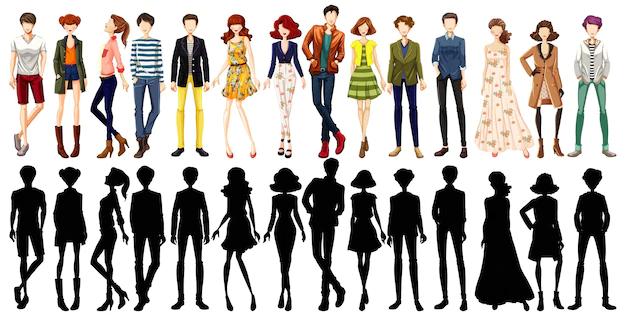Elevating Professional Style: A Comprehensive Guide to Chic Work Attire
This guide explores the principles of professional attire, integrating individual style with workplace appropriateness. We will examine key concepts such as color theory, silhouette design, and the strategic use of accessories to create sophisticated and impactful outfits, enhancing both confidence and professional image. The application of these principles is illustrated through fifteen distinct outfit combinations, demonstrating versatility and adaptability in professional settings.
Foundational Elements of Professional Style
Building a successful professional wardrobe begins with understanding foundational garments. This involves applying principles of visual merchandising and personal branding. Investing in well-tailored trousers (Theory of Fit and Proportion) in neutral colors like navy or charcoal grey forms a versatile base for numerous outfits. The structured silhouette creates a polished aesthetic, aligning with the principles of formal attire. High-quality fabrics, such as wool or cotton blends, not only enhance the garment’s longevity but also contribute to a perception of sophistication, consistent with signaling theory. Similarly, a classic, well-fitting blazer in a neutral color serves as a versatile layering piece, instantly elevating even the simplest outfit (Wardrobe Capsule Concept). Its inherent structure complements various silhouettes, from pencil skirts to wide-leg trousers, demonstrating the principle of adaptability in professional dressing. These foundational pieces, when carefully selected, provide a flexible core for creating a variety of professional looks.
Enhancing Professional Attire Through Strategic Design Elements
Strategic use of color and texture significantly impacts the overall aesthetic. Monochromatic outfits, utilizing varying shades of a single color (e.g., greys or navys) projects understated elegance and sophistication (Color Psychology). This approach showcases the quality of the fabrics and tailoring, rather than relying on bold patterns. To introduce personality without compromising professionalism, consider strategic use of color pops. A vibrant scarf, statement jewelry, or a brightly colored blouse can inject personality and visual interest without distracting from the overall professional image (Color Wheel Theory). This controlled use of color complements the base palette, creating a sophisticated yet distinctive look. The use of textured fabrics, such as tweed or silk, adds depth and luxury, reflecting a commitment to quality and attention to detail (Sensory Marketing). Incorporating these elements creates a visually engaging and professional aesthetic.
Accessories and Silhouettes: Refining Professional Style
Accessories play a crucial role in personalizing professional attire. Statement necklaces, earrings, or scarves add personality and visual interest, reflecting individual style without compromising professionalism (Nonverbal Communication). These choices should complement the overall outfit, adding a touch of individuality while maintaining workplace appropriateness. The choice of silhouette also significantly impacts the overall impression. A structured dress, cinched at the waist, creates a flattering and professional silhouette, emphasizing the principles of body language and confidence (Fashion Design Principles). Similarly, a pencil skirt offers a timeless and versatile option, pairing well with various tops and blazers. Wide-leg trousers provide a modern alternative, offering both comfort and style. These carefully selected silhouettes work to create a strong and confident visual presentation, influencing how others perceive competence and professionalism.
Layering and Footwear: Completing the Professional Ensemble
Layering enhances the depth and complexity of an outfit, providing warmth and versatility. A lightweight cardigan, vest, or structured jacket can transform a basic outfit into something more sophisticated (Fashion Styling). This demonstrates an understanding of creating visual interest and depth through layering techniques. Footwear choices significantly impact the overall look. Stylish heels or elegant flats should complement the outfit and personal style, reflecting attention to detail (Visual Merchandising). The choice of footwear not only enhances comfort but also completes the overall aesthetic, reflecting professionalism and attention to detail. The proper selection of shoes enhances the overall outfit and communicates attention to detail, essential for a polished professional image.
Advanced Techniques for Professional Style
Mastering the art of defining the waistline, using a well-chosen belt, adds structure and polish to various outfits. It enhances the overall silhouette and creates a more tailored appearance (Fashion Design). The strategic use of turtlenecks, especially in colder months, offers warmth and sophistication, complementing tailored trousers or a pencil skirt. For a powerful statement, consider modern suit interpretations with innovative cuts, asymmetrical buttons, or unique patterns, creating a contemporary and stylish professional look. By incorporating these techniques, individuals can express their personality while maintaining the required level of professional style.



